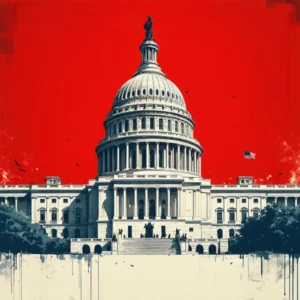
Introduction
In a dramatic twist that captured nationwide attention, former Alaska Governor Sara Palin reenters the legal arena. She initiates a renewed lawsuit against The New York Times, asserting that a controversial editorial misrepresented her connection to a mass shooting. Moreover, she challenges the narrative established by one of the nation’s most influential papers. Consequently, the lawsuit promises to reshape the conversation about defamation and media responsibility. Additionally, legal experts predict that the case might influence future press practices.
Case Background
A storied past forms the background of this dispute. Initially, The New York Times published an editorial that, according to Palin, unfairly linked her to a mass shooting.
Media’s Role and Narrative Construction
Palin argues that the newspaper crafted a narrative that distorted facts. She asserts that the editorial choices and selection of sources contributed to the harmful portrayal of her persona. Furthermore, supporters allege that the piece created an association that never existed. In contrast, media advocates defend editorial freedom, arguing that the paper exercised its right to publicly discuss political figures.
To clarify the complex progression of events, consider the following bullet points:
- The original lawsuit emerged shortly after the editorial’s publication.
- Court decisions initially favored a reset of the proceedings.
- Subsequent rulings led to renewed litigation.
- Both legal teams now prepare for a potentially landmark trial.
Moreover, public interest remains high as the controversy continues to escalate.
Timeline of the Case
A step-by-step timeline clarifies the unfolding events:
- Initial lawsuit filed in response to the editorial and ensuing media uproar.
- Lower court ruled on several procedural matters, setting the stage for reconsideration.
- A reversal of the previous decision led to the reinstatement of Palin’s claims.
- New hearings and motions underline the intense litigation atmosphere.
Subsequently, both sides mobilize evidence and expert testimonies, underscoring the high stakes involved.
Legal Arguments and Evidence
Legal teams present extensive arguments and supporting evidence. Palin’s attorneys assert that the editorial contained defamatory elements that have damaged her reputation. They claim that several statements within the article linked her, unfoundedly, with extremist violence. Consequently, they demand corrective action and financial compensation. Additionally, the court receives documents that challenge the integrity of journalistic practices in this instance.
A detailed table summarizes the primary pieces of evidence:
| Evidence | Description | Impact |
|---|---|---|
| Editorial Piece | A published opinion article linking Palin to a mass shooting. | Central to the defamation claims. |
| Internal Communications | Emails and memos between editorial staff regarding the narrative. | Used to argue bias and editorial misconduct. |
| Expert Analysis | Testimonies by legal and media experts on defamation standards. | Strengthens the argument for misrepresentation. |
| Witness Statements | Accounts from former colleagues and advisors. | Highlight inconsistencies in the reporting strategy. |
Moreover, both parties deploy affidavits and depositions, ensuring that every element of the story receives thorough examination.
Implications on Journalism
The renewed suit sparks debate on journalistic boundaries and free speech. Critics warn that this case could lead to excessive caution among media outlets. Conversely, supporters stress that accountability enhances public trust. Meanwhile, legal scholars discuss the delicate balance between freedom of expression and the need to safeguard individual reputations. Furthermore, the case invites comparisons with earlier defamation battles involving public figures and influential news organizations. Transitional debates prompt media practitioners to reexamine operational ethics. Additionally, industry watchdogs call for reform in editorial oversight to prevent similar controversies.
Political Ramifications
Political commentators observe that the litigation reflects broader social and ideological divisions. On one hand, conservative supporters of Palin view the lawsuit as a stand against what they consider biased media treatment. On the other, liberal critics insist that reputable journalism bears a responsibility to challenge powerful figures. Nonetheless, both sides agree that the case impacts political discourse and public opinion. Moreover, the trial may alter how political narratives are constructed and propagated, encouraging scrutiny of opinion pieces across all publications. Additionally, partisan debates now interlace legal analysis and media criticism, propelling an ongoing national dialogue.
Future of the Case
Looking forward, legal experts forecast a highly dynamic trial process. They anticipate that both Palin’s legal team and The New York Times will introduce additional evidence in the coming months. Consequently, a series of procedural motions and witness testimonies will likely shape the forthcoming hearings. Moreover, technological advancements in media analysis have already begun to play a role in sifting through vast amounts of data. Transitioning between legal strategies, both sides appear committed to dismantling the opposing narrative thoroughly. Additionally, the case may pave the way for revisions to defamation law, which experts believe will resonate across various sectors of journalism and political accountability.
Conclusion
In conclusion, the renewed suit epitomizes the ongoing struggle between a politically influential media institution and a high-profile former leader. Palin’s claim emphasizes the importance of responsible journalism and the potential consequences of unfounded allegations. Meanwhile, The New York Times prepares to defend its editorial approach under the scrutiny of modern legal standards. Furthermore, commentators emphasize that the case extends beyond individual reputations; it encapsulates the larger debate over media ethics and accountability. As the trial unfolds, both legal scholars and the public watch with bated breath, recognizing that the outcome may significantly influence future interactions between the press, public figures, and political narratives. Ultimately, the litigation serves as a timely reminder that truth, transparency, and fairness remain indispensable in journalism, and that every disputed narrative invites rigorous investigation and debate.




